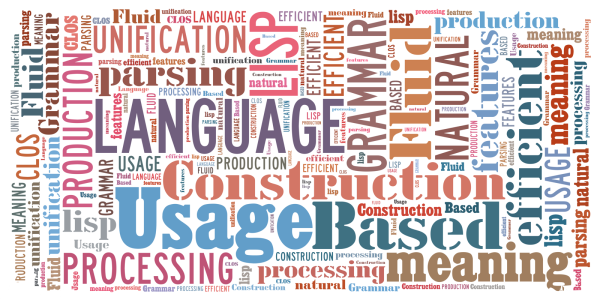Introduction:
Language is a remarkable human phenomenon, serving as the foundation of communication and thought. It allows us to convey our ideas, emotions, and experiences to others, fostering understanding and connection. But have you ever wondered how we are able to effortlessly comprehend the complex structure and meaning of sentences? This is where syntactic processing comes into play. In this blog, we will embark on a fascinating journey into the world of syntactic processing, uncovering its significance and unveiling the underlying mechanisms that make language comprehension possible.
Understanding Syntactic Processing:
Syntactic processing refers to the cognitive ability to parse and comprehend the grammatical structure of sentences. It involves the analysis of words, phrases, and sentences, as well as the relationships between them. This intricate process takes place in our brains at lightning speed, allowing us to effortlessly extract meaning from the words we encounter.
Syntactic processing plays a crucial role in various aspects of language comprehension. It enables us to recognize the subject, verb, and object in a sentence, understand the hierarchical structure of phrases, and decipher the roles of different words within a sentence. Without syntactic processing, the meaning conveyed through language would be incoherent and ambiguous.
The Complexity of Syntactic Structures:
Language is incredibly diverse, boasting an array of syntactic structures that vary across different languages. From subject-verb-object (SVO) word order to complex nested clauses, the ways in which languages arrange words and phrases are truly astonishing. Syntactic processing allows us to navigate this complexity effortlessly, revealing the underlying order and meaning within sentences.
One of the key challenges in syntactic processing is ambiguity. Sentences can often be interpreted in multiple ways, making it crucial for our brains to apply syntactic rules and contextual cues to disambiguate the intended meaning. Consider the sentence, "Visiting relatives can be tedious." Here, the phrase "visiting relatives" can either be the subject or the object of the sentence, depending on the syntactic structure applied. Through syntactic processing, we can resolve this ambiguity and arrive at the correct interpretation based on contextual clues.
Syntactic Processing in the Brain:
The human brain is an extraordinary organ, housing a complex network of regions that work together to process language. Neuroimaging studies have shed light on the neural mechanisms involved in syntactic processing. The left hemisphere, particularly the Broca's area and the posterior superior temporal gyrus, has been found to be crucial for syntactic analysis and sentence comprehension.
Researchers have also discovered that syntactic processing occurs rapidly and automatically, often unfolding within a fraction of a second. This efficiency suggests that our brains have developed specialized mechanisms for syntactic analysis, allowing us to comprehend language effortlessly and in real-time.
Applications and Implications:
Understanding the intricacies of syntactic processing has numerous practical implications. It has profound implications for language acquisition, as children develop their ability to parse and comprehend sentences as they grow. Studying syntactic processing can aid in the diagnosis and treatment of language disorders, such as aphasia, dyslexia, and specific language impairment. It also has implications for natural language processing in artificial intelligence systems, enabling machines to understand and generate human-like sentences.
Furthermore, syntactic processing research has implications for second language learning, as it sheds light on the challenges learners face in acquiring the syntax of a new language. By gaining insights into the mechanisms underlying syntactic processing, educators and language learners can develop more effective strategies to enhance language proficiency.
Conclusion:
Syntactic processing is a remarkable cognitive ability that plays a pivotal role in our ability to comprehend and produce language. Through this intricate process, our brains effortlessly extract the grammar and syntax embedded within sentences, allowing us to navigate the complexities of human communication.
The study of syntactic processing has far-reaching implications across various domains. In the field of language acquisition, understanding how children develop their syntactic abilities provides valuable insights into the mechanisms underlying language learning. It can inform educators and parents on effective strategies for facilitating language development in young learners.
Syntactic processing also holds great importance in the realm of language disorders. Research in this area aids in diagnosing and treating conditions such as aphasia, dyslexia, and specific language impairments. By unraveling the underlying syntactic difficulties experienced by individuals with language disorders, clinicians can develop targeted interventions to improve their language skills.
Moreover, advancements in syntactic processing research have implications for artificial intelligence and natural language processing systems. By unraveling the neural mechanisms involved in syntactic analysis, researchers can improve the accuracy and efficiency of language processing algorithms. This enables machines to better understand and generate human-like sentences, enhancing their capacity to communicate with humans effectively.
In the realm of second language acquisition, understanding the challenges faced by learners in acquiring the syntax of a new language is of utmost importance. Syntactic processing research provides insights into the strategies learners employ and the difficulties they encounter. This knowledge can guide language educators in designing instructional materials and techniques that facilitate the acquisition of syntactic structures more effectively.
In conclusion, syntactic processing is a fascinating cognitive process that underlies our ability to comprehend and produce language. It allows us to unlock the intricate structures and meanings within sentences, facilitating effective communication and understanding. By delving into the mechanisms and implications of syntactic processing, we gain a deeper appreciation for the beauty and complexity of human language.

.jpg)

0 Comments